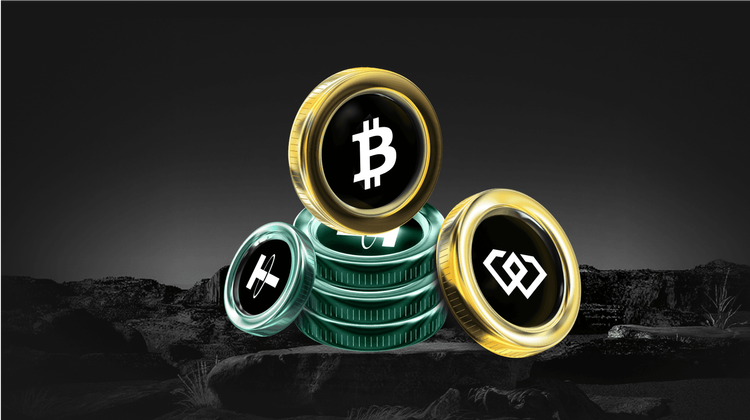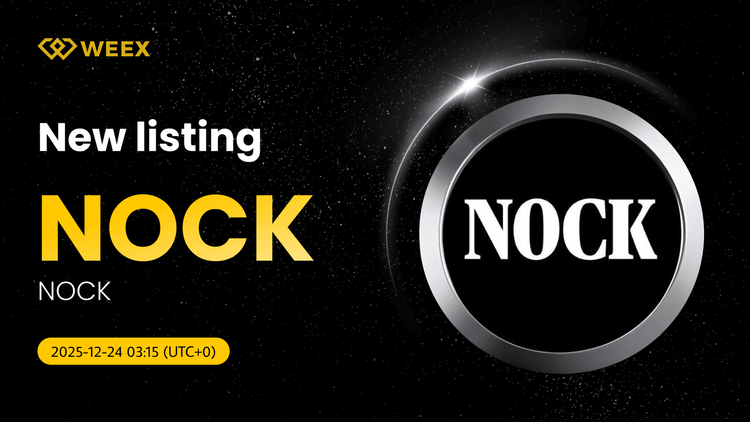Introducing x402: Complete Guide to the HTTP-402 Payments Protocol — Plus WEEX $115 x402 Ecosystem Week
For decades, the web has relied on the familiar HTTP status codes that quietly power every digital interaction. But one code — HTTP 402: Payment Required — has remained unused since its creation. Now, Coinbase is bringing it to life through x402, an open payment protocol that embeds on-chain transactions directly into the HTTP layer.
What is x402?
x402 is an open, internet-native payments protocol that embeds programmable, on-chain payments directly into ordinary HTTP interactions using the long-unused HTTP 402 “Payment Required” status code. It lets clients — especially autonomous AI agents and machine-to-machine callers — discover a price, submit a cryptographic payment proof in an X-PAYMENT header, and receive the paid resource in the same request/response flow. The protocol is chain-agnostic but is commonly used with stablecoins like USDC and with hosted “facilitator” services that verify and settle payments on behalf of sellers.
This means a machine can autonomously pay for data, compute, or model access just as easily as it fetches a webpage. By extending the web’s most universal protocol with payment capability, x402 effectively turns the internet into a programmable economy.
x402 was developed and open-sourced by Coinbase as a practical response to the growing need for machine-friendly, per-use payments for APIs, models, and data. Coinbase published the protocol and supporting developer docs and reference implementations on GitHub and its developer platform, and has worked with ecosystem partners to promote adoption. In late 2025 Coinbase and Cloudflare announced the creation of the x402 Foundation to coordinate standards, tooling, and a push toward broader adoption across edge providers and agent SDKs.
The impact of x402 on the industry
x402 could be to payments what HTTPS was to data — a simple yet foundational upgrade. It unlocks true machine-to-machine commerce, allowing every API call, dataset, or model inference to be monetized fairly and automatically.
For businesses, this means micropayments and pay-per-use APIs become viable at scale. For developers, it eliminates the need for complex billing infrastructures. And for AI, it’s the missing link — allowing autonomous agents to not only process information but also pay for it.
In practice, this may reshape entire sectors. Data providers can charge per request, AI models can offer tiered precision pricing, and web services can grant temporary, token-based access without human intervention. As more systems adopt x402, the boundaries between information and value begin to blur — paving the way for a self-paying internet.
x402 addresses a concrete friction point: machines (AI agents, IoT devices, serverless functions) cannot easily use human-centric payment rails like cards, OAuth gated subscriptions, or invoicing. By making payments a first-class HTTP primitive, x402 enables new business models and technical patterns:
- Micropayments & pay-per-call monetization: Services can charge precisely for the value consumed (per inference, per dataset query, per document) without subscription overhead.
- Agentic commerce & composability: Autonomous agents can discover, compare, and pay third-party plugins or APIs on behalf of users, enabling richer agent capabilities and emergent multi-agent marketplaces. (Google’s AP2 / agent payments efforts have explicitly explored interoperability with x402.)
- Reduced onboarding friction: No account creation, no cards, and fewer manual billing steps for pay-as-you-go use cases — speeding developer adoption and conversion.
- Operational tradeoffs & trust models: Facilitators (including Coinbase’s hosted facilitator) simplify settlement and compliance (KYT, OFAC screening), but they also introduce a trusted-service model that teams must evaluate against running their own verification/settlement stack.
What x402 might enable next
Imagine a future where the internet’s economic layer is as frictionless as its data layer: AI agents routinely “tap” paid knowledge providers, computation marketplaces price inference by latency and accuracy, and tiny sensors make micro-payments for on-demand edge compute. In that world:
- marketplaces of microservices flourish (discovery + instant settlement),
- models can be rented by the second or by the token, and
- value flows become composable (agent A pays model B, model B pays a dataset provider C) — all coordinated by standard HTTP semantics.
x402 is a pragmatic stepping stone to that vision: it doesn’t invent new consensus or a new token; it simply gives the web a standard, machine-readable way to say “this costs X” and to accept final, on-chain payment proofs. With broad adoption, x402 could reshape how digital goods and compute are priced and consumed.
WEEX joins the x402 ecosystem
To celebrate the rise of this new payment paradigm, WEEX, one of the leading global cryptocurrency exchanges, has launched the x402 Ecosystem Week — an exclusive campaign designed to onboard new users into the future of on-chain payments.
From October 24 to November 4, 2025 (UTC+8), new users on WEEX can participate in a series of simple tasks to earn up to $115 in rewards. By making an initial deposit, executing their first spot trade, and completing daily future
- Event 1: Reach a net deposit of 100 USDT to claim 8 USDT
- New users who make a net deposit of 100 USDT or equivalent in any selected event tokens (SANTA, AURABASE, PAYAI, MRDN) during the event period are eligible to claim an 8 USDT reward.
- Event 2: Complete first spot trade to claim 7 USDT
- New users who complete their first spot trade of at least 100 USDT in any of the event tokens (SANTA, AURABASE, PAYAI, MRDN) will receive 7 USDT.
- Event 3: Daily trading check-in to earn up to 100 USDT
- New users who achieve a cumulative futures trading volume of at least 500 USDT in any token on a given day during the event will be considered to have successfully checked in. Each user can check in at most once per day. For every successful daily check-in, users will unlock a Mystery Box containing 5 – 10 USDT in futures bonuses. The event lasts for 10 days, and users can earn up to 100 USDT in total. Rewards will be distributed after the event concludes.
- Event 4: Reward requirements
- Participants must follow the event order and complete Event 1, Event 2, and Event 3 during the event period to be eligible to claim all rewards!
Latest Updates on WEEX
If you want toWXT-USDT"> buy WXT now, you can sign up for a WEEX account
WEEX Owen: Michael Owen Joins as Global Brand Ambassador
Championing a revolutionary crypto trading experience
You may also like

Nockchain (NOCK) Coin Price Prediction & Forecasts for December 2025: Surging 14% Amid Meme Token Buzz
Nockchain (NOCK) Coin has just hit the scene on the Base chain, launching today at 12:00 UTC on…

What is Nock (NOCK) Coin?
Nock (NOCK) Coin is the native asset of the Nockchain ecosystem, a unique blockchain designed to merge community…

JPMorgan Chase Tokenized Stock (Ondo) (JPMON) Coin Price Prediction & Forecasts for December 2025 – Steady Climb Post-Launch
The JPMorgan Chase Tokenized Stock (Ondo) (JPMON) Coin just hit the market on December 23, 2025, offering tokenized…

REALGARRYTAN Coin Price Prediction & Forecasts for December 2025 – Fresh Launch Sparks Meme Token Rally Potential
The REALGARRYTAN Coin, a new meme token tied to Garry Tan and launched on the Base chain just…

What is RealGarryTan (REALGARRYTAN) Coin?
The cryptocurrency market constantly evolves, offering new investment opportunities for enthusiasts and traders. Recently, the RealGarryTan (REALGARRYTAN) token…

Walmart Tokenized Stock (Ondo) (WMTON) Coin Price Prediction & Forecasts for December 2025 – Could It Rebound After Recent Dip?
As of December 2025, Walmart Tokenized Stock (Ondo) (WMTON) Coin has just hit the market, offering tokenized exposure…

What is Walmart Tokenized Stock (WMTON) Coin?
Walmart Tokenized Stock (WMTON) has recently made its debut on WEEX, giving investors a chance to engage in…

What is Costco Tokenized Stock (COSTON) Coin?
The Costco Tokenized Stock, known by its abbreviation COSTON, has made its way to WEEX, officially listed on…

Goldman Sachs Tokenized Stock (Ondo) (GSON) Coin Price Prediction & Forecasts for December 2025 – Surge Potential Amid RWA Momentum
The Goldman Sachs Tokenized Stock (Ondo) (GSON) Coin has been making waves in the real-world asset (RWA) space,…

What is Goldman Sachs Tokenized Stock (GSON) Coin?
In an exciting development for crypto enthusiasts, the Goldman Sachs Tokenized Stock, known as GSON, has been newly…

Linde plc Tokenized Stock (Ondo) (LINON) Coin Price Prediction & Forecasts for December 2025 and Beyond
Linde plc Tokenized Stock (Ondo) (LINON) Coin has just entered the spotlight as a tokenized version of Linde…

What is Linde plc Tokenized Stock (LINON) Coin?
The Linde plc Tokenized Stock (LINON) coin has been a noteworthy addition to the crypto trading landscape with…

NOCK USDT Now on WEEX: Spot Trade Nockchain (NOCK) Coin
WEEX Exchange lists Nockchain (NOCK) Coin for spot trading. Access the NOCK USDT pair now to join the truth economy ecosystem via this new listing.

ServiceNow Tokenized Stock (Ondo) (NOWON) Token Price Prediction & Forecasts for December 2025: Could It Rally Amid RWA Momentum?
The ServiceNow Tokenized Stock (Ondo) (NOWON) Token just hit the market today, December 23, 2025, at 18:10 UTC,…

What is ServiceNow Tokenized Stock (NOWON) Coin?
ServiceNow Tokenized Stock, abbreviated as NOWON, is the latest crypto asset to be listed on WEEX, available for…

Nike Tokenized Stock (Ondo) (NKEON) Token Price Prediction & Forecasts for December 2025 – Potential Rebound Amid Market Volatility?
Nike Tokenized Stock (Ondo) (NKEON) has been making waves in the real-world asset (RWA) space by tokenizing shares…

What is Nike Tokenized Stock (NKEON) Coin?
The Nike Tokenized Stock (NKEON) Coin, listed on WEEX, offers an innovative way for non-US retail and institutional…

Salesforce Tokenized Stock (Ondo) (CRMON) Coin Price Prediction & Forecasts for December 2025: Could It Surge Amid RWA Momentum?
As a seasoned crypto investor who’s traded through multiple bull and bear cycles, I’ve seen how tokenized assets…
Nockchain (NOCK) Coin Price Prediction & Forecasts for December 2025: Surging 14% Amid Meme Token Buzz
Nockchain (NOCK) Coin has just hit the scene on the Base chain, launching today at 12:00 UTC on…
What is Nock (NOCK) Coin?
Nock (NOCK) Coin is the native asset of the Nockchain ecosystem, a unique blockchain designed to merge community…
JPMorgan Chase Tokenized Stock (Ondo) (JPMON) Coin Price Prediction & Forecasts for December 2025 – Steady Climb Post-Launch
The JPMorgan Chase Tokenized Stock (Ondo) (JPMON) Coin just hit the market on December 23, 2025, offering tokenized…
REALGARRYTAN Coin Price Prediction & Forecasts for December 2025 – Fresh Launch Sparks Meme Token Rally Potential
The REALGARRYTAN Coin, a new meme token tied to Garry Tan and launched on the Base chain just…
What is RealGarryTan (REALGARRYTAN) Coin?
The cryptocurrency market constantly evolves, offering new investment opportunities for enthusiasts and traders. Recently, the RealGarryTan (REALGARRYTAN) token…
Walmart Tokenized Stock (Ondo) (WMTON) Coin Price Prediction & Forecasts for December 2025 – Could It Rebound After Recent Dip?
As of December 2025, Walmart Tokenized Stock (Ondo) (WMTON) Coin has just hit the market, offering tokenized exposure…
Popular coins
Customer Support:@weikecs
Business Cooperation:@weikecs
Quant Trading & MM:bd@weex.com
VIP Services:support@weex.com
